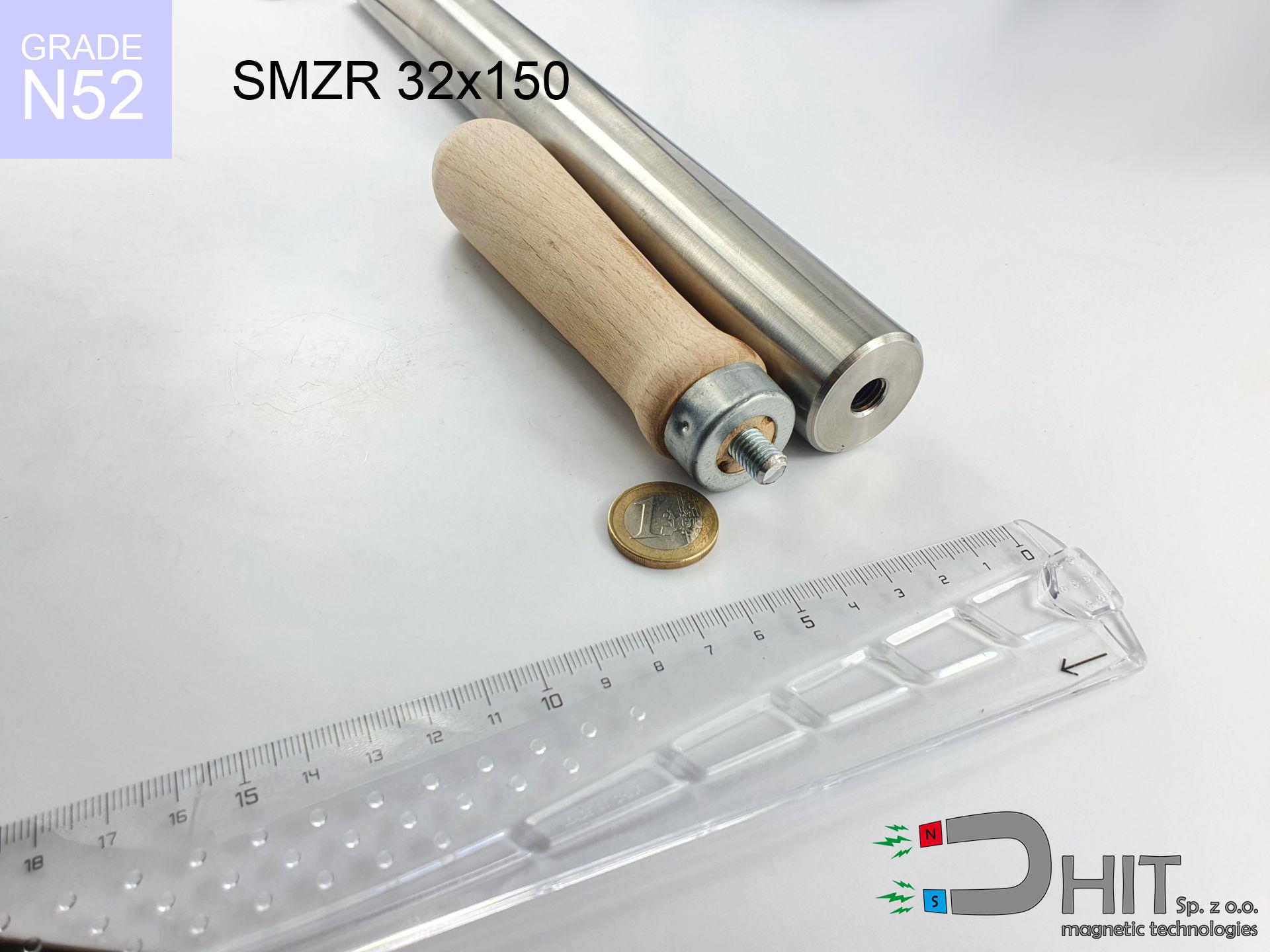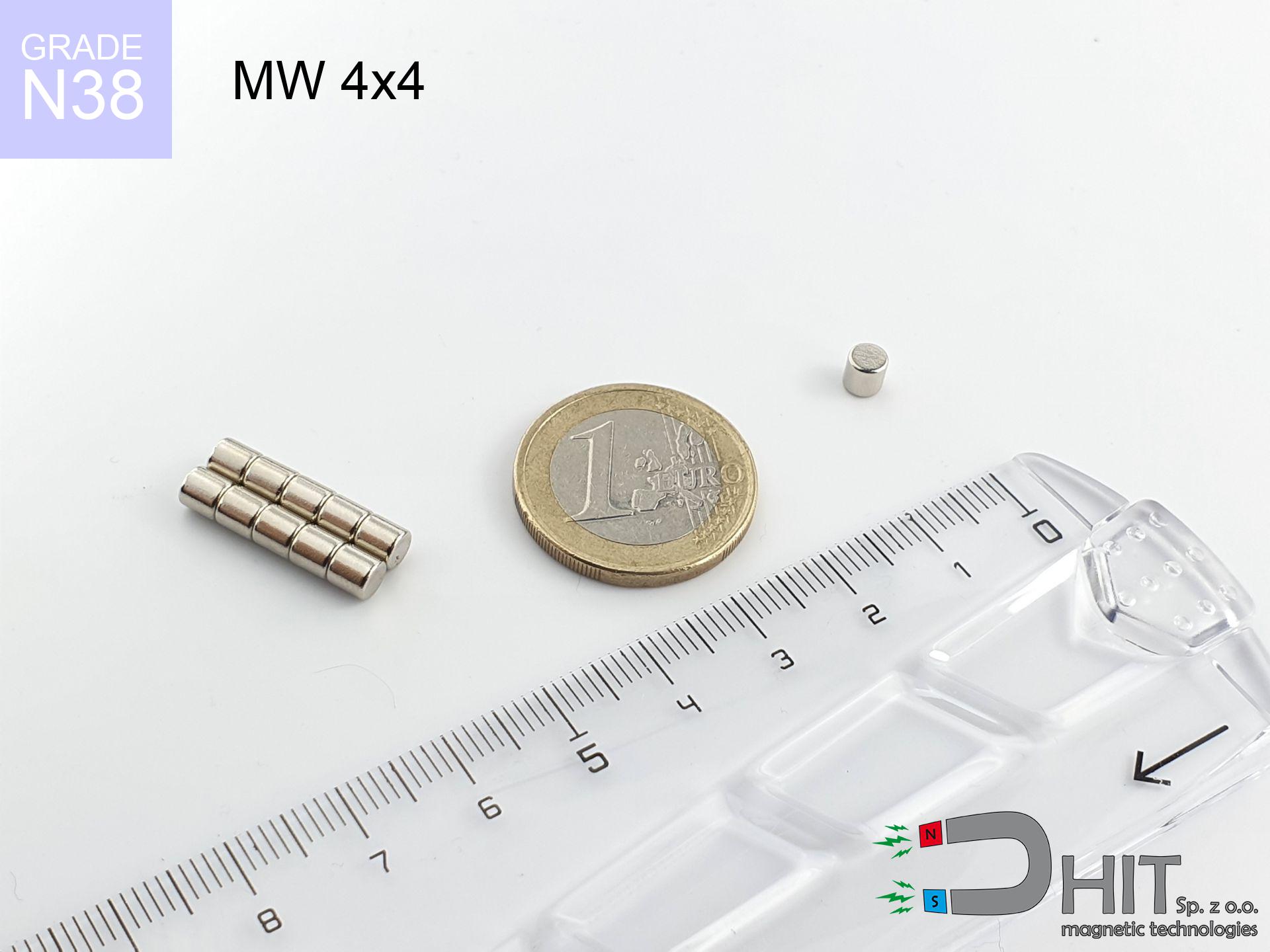SMZR 32x150 / N52 - magnetic separator with handle
magnetic separator with handle
Catalog no 140239
GTIN/EAN: 5906301813477
Diameter Ø
32 mm [±1 mm]
Height
150 mm [±1 mm]
Weight
935 g
Magnetic Flux
~ 10 000 Gauss [±5%]
492.00 ZŁ with VAT / pcs + price for transport
400.00 ZŁ net + 23% VAT / pcs
bulk discounts:
Need more?
Give us a call
+48 22 499 98 98
otherwise drop us a message through
inquiry form
the contact form page.
Parameters as well as form of a magnet can be analyzed on our
our magnetic calculator.
Same-day processing for orders placed before 14:00.
Physical properties - SMZR 32x150 / N52 - magnetic separator with handle
Specification / characteristics - SMZR 32x150 / N52 - magnetic separator with handle
| properties | values |
|---|---|
| Cat. no. | 140239 |
| GTIN/EAN | 5906301813477 |
| Production/Distribution | Dhit sp. z o.o. |
| Country of origin | Poland / China / Germany |
| Customs code | 85059029 |
| Diameter Ø | 32 mm [±1 mm] |
| Height | 150 mm [±1 mm] |
| Weight | 935 g |
| Material Type | Stainless steel AISI 304 / A2 |
| Magnetic Flux | ~ 10 000 Gauss [±5%] |
| Size/Mount Quantity | 2xM8 |
| Polarity | circumferential - 5 poles |
| Casing Tube Thickness | 1 mm |
| Manufacturing Tolerance | ±1 mm |
Magnetic properties of material N52
| properties | values | units |
|---|---|---|
| remenance Br [min. - max.] ? | 14.2-14.7 | kGs |
| remenance Br [min. - max.] ? | 1420-1470 | mT |
| coercivity bHc ? | 10.8-12.5 | kOe |
| coercivity bHc ? | 860-995 | kA/m |
| actual internal force iHc | ≥ 12 | kOe |
| actual internal force iHc | ≥ 955 | kA/m |
| energy density [min. - max.] ? | 48-53 | BH max MGOe |
| energy density [min. - max.] ? | 380-422 | BH max KJ/m |
| max. temperature ? | ≤ 80 | °C |
Physical properties of sintered neodymium magnets Nd2Fe14B at 20°C
| properties | values | units |
|---|---|---|
| Vickers hardness | ≥550 | Hv |
| Density | ≥7.4 | g/cm3 |
| Curie Temperature TC | 312 - 380 | °C |
| Curie Temperature TF | 593 - 716 | °F |
| Specific resistance | 150 | μΩ⋅cm |
| Bending strength | 250 | MPa |
| Compressive strength | 1000~1100 | MPa |
| Thermal expansion parallel (∥) to orientation (M) | (3-4) x 10-6 | °C-1 |
| Thermal expansion perpendicular (⊥) to orientation (M) | -(1-3) x 10-6 | °C-1 |
| Young's modulus | 1.7 x 104 | kg/mm² |
Table 1: Rod construction
SMZR 32x150 / N52
| Parameter | Value | Description / Unit |
|---|---|---|
| Diameter (Ø) | 32 | mm |
| Total length | 150 | mm (L) |
| Active length | 130 | mm |
| Section count | 5 | modules |
| Dead zone | 20 | mm (Blaszka 2mm + Gwint 18mm) |
| Weight (est.) | ~917 | g |
| Active area | 131 | cm² (Area) |
| Housing material | AISI 304 | 1.4301 (Inox) |
| Surface finish | Ra < 0.8 µm | Polished |
| Temp. class | 80°C | Standard (N) |
| Force loss (at max °C) | -12.8% | Reversible loss (physics) |
| Force (calculated) | 41 | kg (theor.) |
| Induction (surface) | ~10 000 | Gauss (Max) |
Chart 2: Field profile (5 sections)
Chart 3: Temperature performance
Material specification
| iron (Fe) | 64% – 68% |
| neodymium (Nd) | 29% – 32% |
| boron (B) | 1.1% – 1.2% |
| dysprosium (Dy) | 0.5% – 2.0% |
| coating (Ni-Cu-Ni) | < 0.05% |
Sustainability
| recyclability (EoL) | 100% |
| recycled raw materials | ~10% (pre-cons) |
| carbon footprint | low / zredukowany |
| waste code (EWC) | 16 02 16 |
Other offers
Pros and cons of Nd2Fe14B magnets.
Benefits
- They do not lose power, even over nearly 10 years – the reduction in strength is only ~1% (based on measurements),
- They possess excellent resistance to weakening of magnetic properties due to external fields,
- Thanks to the metallic finish, the layer of Ni-Cu-Ni, gold, or silver gives an modern appearance,
- Magnetic induction on the top side of the magnet turns out to be maximum,
- Thanks to resistance to high temperature, they can operate (depending on the shape) even at temperatures up to 230°C and higher...
- Due to the potential of accurate molding and customization to individualized requirements, neodymium magnets can be manufactured in a broad palette of shapes and sizes, which makes them more universal,
- Versatile presence in high-tech industry – they find application in hard drives, brushless drives, medical devices, as well as modern systems.
- Relatively small size with high pulling force – neodymium magnets offer high power in compact dimensions, which allows their use in miniature devices
Disadvantages
- At very strong impacts they can break, therefore we advise placing them in steel cases. A metal housing provides additional protection against damage, as well as increases the magnet's durability.
- When exposed to high temperature, neodymium magnets suffer a drop in strength. Often, when the temperature exceeds 80°C, their power decreases (depending on the size and shape of the magnet). For those who need magnets for extreme conditions, we offer [AH] versions withstanding up to 230°C
- Due to the susceptibility of magnets to corrosion in a humid environment, we suggest using waterproof magnets made of rubber, plastic or other material resistant to moisture, when using outdoors
- We recommend cover - magnetic mount, due to difficulties in realizing threads inside the magnet and complex forms.
- Possible danger related to microscopic parts of magnets pose a threat, when accidentally swallowed, which gains importance in the context of child safety. Furthermore, small components of these magnets can disrupt the diagnostic process medical in case of swallowing.
- High unit price – neodymium magnets are more expensive than other types of magnets (e.g. ferrite), which can limit application in large quantities
Pull force analysis
Maximum holding power of the magnet – what affects it?
- using a plate made of low-carbon steel, serving as a ideal flux conductor
- whose thickness equals approx. 10 mm
- with a surface cleaned and smooth
- under conditions of no distance (metal-to-metal)
- during detachment in a direction perpendicular to the mounting surface
- in temp. approx. 20°C
Determinants of lifting force in real conditions
- Distance (betwixt the magnet and the plate), as even a microscopic clearance (e.g. 0.5 mm) results in a reduction in force by up to 50% (this also applies to paint, corrosion or dirt).
- Load vector – maximum parameter is obtained only during perpendicular pulling. The resistance to sliding of the magnet along the surface is standardly several times lower (approx. 1/5 of the lifting capacity).
- Metal thickness – the thinner the sheet, the weaker the hold. Part of the magnetic field penetrates through instead of generating force.
- Steel grade – the best choice is high-permeability steel. Stainless steels may attract less.
- Plate texture – ground elements guarantee perfect abutment, which improves force. Uneven metal reduce efficiency.
- Temperature – temperature increase causes a temporary drop of induction. It is worth remembering the thermal limit for a given model.
Holding force was tested on a smooth steel plate of 20 mm thickness, when a perpendicular force was applied, whereas under shearing force the load capacity is reduced by as much as fivefold. Moreover, even a slight gap between the magnet and the plate decreases the load capacity.
Precautions when working with neodymium magnets
Bone fractures
Big blocks can smash fingers in a fraction of a second. Under no circumstances place your hand between two attracting surfaces.
Dust is flammable
Drilling and cutting of neodymium magnets carries a risk of fire risk. Neodymium dust oxidizes rapidly with oxygen and is hard to extinguish.
GPS Danger
Navigation devices and smartphones are extremely sensitive to magnetism. Direct contact with a powerful NdFeB magnet can decalibrate the internal compass in your phone.
Maximum temperature
Watch the temperature. Heating the magnet to high heat will destroy its magnetic structure and pulling force.
Cards and drives
Powerful magnetic fields can corrupt files on credit cards, HDDs, and storage devices. Maintain a gap of min. 10 cm.
Choking Hazard
Absolutely keep magnets out of reach of children. Choking hazard is high, and the effects of magnets clamping inside the body are fatal.
Health Danger
People with a pacemaker should maintain an safe separation from magnets. The magnetism can disrupt the functioning of the implant.
Metal Allergy
Nickel alert: The nickel-copper-nickel coating contains nickel. If an allergic reaction happens, cease handling magnets and use protective gear.
Respect the power
Use magnets with awareness. Their huge power can shock even experienced users. Stay alert and respect their force.
Risk of cracking
Protect your eyes. Magnets can fracture upon uncontrolled impact, ejecting shards into the air. Eye protection is mandatory.








